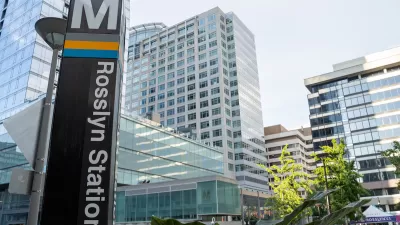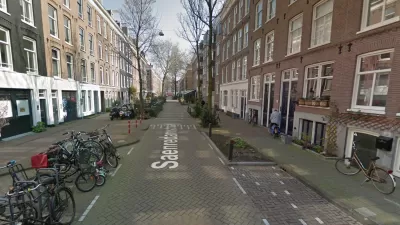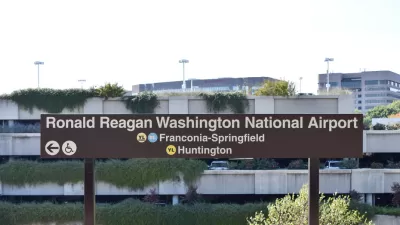Generally speaking, elected officials don't campaign for higher fees. However, in this op-ed, D.C. Councilman Tommy Wells draws a connections between higher residential parking fees, improved public transit, and better access to street paking.
Wells acknowledges the shortage of on-street parking spaces in many neighborhoods: "In many neighborhoods, there is not enough parking for every household to use even one space on the street." He proposes higher fees as a win-win strategy for dealing with the shortage.
"D.C. residential parking permits generally cost $15 each for an unlimited number of vehicles, and the mayor's budget would increase that to $25. My proposal would charge each household $35 for a first sticker...., charge an only slightly higher fee of $50 for the second," and costs would then double to $100 for additional ones.
Councilman Wells proposes to direct the increased revenue to public transit, more traffic control officers, and other improvements. He explains how the higher fee would discourage households with multiple vehicles to cut back or find alternative parking places.
"Without this parking fee increase, the mayor's proposed budget would require service cuts at Washington Metropolitan Area Transit Authority. That means the 37 percent of D.C. households that do not own a car and probably depend on Metro for their basic transportation would lose a city service, while those who own cars would continue receiving a tangible city benefit for only a nominal fee."
Thanks to Ann Mesnikoff
FULL STORY: Opinions: Raising parking fees is a win-win for D.C.

Alabama: Trump Terminates Settlements for Black Communities Harmed By Raw Sewage
Trump deemed the landmark civil rights agreement “illegal DEI and environmental justice policy.”

Planetizen Federal Action Tracker
A weekly monitor of how Trump’s orders and actions are impacting planners and planning in America.

The 120 Year Old Tiny Home Villages That Sheltered San Francisco’s Earthquake Refugees
More than a century ago, San Francisco mobilized to house thousands of residents displaced by the 1906 earthquake. Could their strategy offer a model for the present?

Indy Neighborhood Group Builds Temporary Multi-Use Path
Community members, aided in part by funding from the city, repurposed a vehicle lane to create a protected bike and pedestrian path for the summer season.

Congestion Pricing Drops Holland Tunnel Delays by 65 Percent
New York City’s contentious tolling program has yielded improved traffic and roughly $100 million in revenue for the MTA.

In Both Crashes and Crime, Public Transportation is Far Safer than Driving
Contrary to popular assumptions, public transportation has far lower crash and crime rates than automobile travel. For safer communities, improve and encourage transit travel.
Urban Design for Planners 1: Software Tools
This six-course series explores essential urban design concepts using open source software and equips planners with the tools they need to participate fully in the urban design process.
Planning for Universal Design
Learn the tools for implementing Universal Design in planning regulations.
Clanton & Associates, Inc.
Jessamine County Fiscal Court
Institute for Housing and Urban Development Studies (IHS)
City of Grandview
Harvard GSD Executive Education
Toledo-Lucas County Plan Commissions
Salt Lake City
NYU Wagner Graduate School of Public Service





























